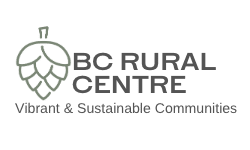Rural First Nations
Kaska Dena Council
The Kaska Dena Council was formed as a Society in 1981 to advance the interests of Kaska individuals who are beneficiaries of a potential treaty settlement in British Columbia with BC and Canada. In addition to fulfilling the mandate of negotiating a treaty with BC and Canada, the purpose of Kaska Dena Council includes:
Promote unity and sharing amongst all Kaska
Assist in the delivery of services including social, economic, cultural, and educational programs to Kaska Dena communities
Promote a community environment wherein all Kaska people can enjoy physical and spiritual health and live with dignity and pride
Work toward the recognition and protection of the Aboriginal Rights of all Canadian Indigenous people
Do all things necessary to achieve the foregoing objectives
Shuswap Nation Tribal Council
The Shuswap Nation Tribal Council, also known as the SNTC, was formed in 1980 as an effort of the Secwepemc chiefs to advance the issues of aboriginal rights. As an organization, it works on matters of common concern, including the development of self-government and the settlement of the aboriginal land title question. The SNTC also provides technical support to member communities to improve services in health, child welfare, employment and training, research on traditional territories and community development.
The SNTC’s role is also to establish agreements, with the provincial and federal governments and with the private sector, that recognize and respect Secwepemc self-government, aboriginal rights and title. It carries out activities, wherever possible, in cooperation with non-member Shuswap Bands and, in all circumstances, without prejudice to their rights and interests.
Adams Lake Indian Band - a member of the Shuswap Nation Tribal Council
St'át'imc — Lillooet Tribal Council
The St'át'imc Chiefs Council (SCC) consists of political representatives from the 11 communities within the St'át'imc Nation. These communities include Bridge River (Nxwisten), Pavilion (Ts'kw'aylacw), Cayoose Creek (Sekw'el'was), Mt. Currie (Lil'wat), Seton Lake (Chalath), Lillooet (T'it'q'et), Fountain (Xaxl'ip), Anderson Lake (N'quatqua), Douglas (Xa'xtsa), Skatin and Samahquam. Each community representative has a seat at the St'át'imc Chiefs Council table. The St'át'imc Chiefs meet on a monthly basis. The aim is to follow through on the direction received from the people during the Unity meetings, which was for the leadership to work together on a political level to address issues in a unified manner. The mandate that the SCC focuses upon is the long outstanding issue of their people's title and rights, along with land and resource concerns. There are several related issues that are also dealt with by the St'át'imc Chiefs Council.
Nicola Tribal Association
The total membership of the Nicola Tribal Association (NTA) communities is currently 2,555 members. The seven communities that make up the NTA are situated within a 115 km radius of the city of Merritt, British Columbia. They are located in the Nicola Valley, along the Thompson River and in the Fraser Canyon.
Ktunaxa First Nation
Ktunaxa (pronounced ‘k-too-nah-ha’) people have occupied the lands adjacent to the Kootenay and Columbia Rivers and the Arrow Lakes of British Columbia, Canada for more than 10,000 years.
The Traditional Territory of the Ktunaxa Nation covers approximately 70,000 square kilometres (27,000 square miles) within the Kootenay region of south-eastern British Columbia and historically included parts of Alberta, Montana, Washington and Idaho.
Ktunaxa citizenship is comprised of Nation members from six Bands located throughout historic traditional Ktunaxa territory. Five Bands are located in British Columbia, and two are in the United States. Many Ktunaxa citizens also live in urban and rural areas “off reserve”.
Okanagan Nation Alliance
The Syilx-speaking people are the original inhabitants of a vast territory that encompasses forests, grasslands, lakes, and desert. For thousands of years, the Okanagan people were self-reliant and well provided for through their own ingenuity and use of the land and nature. They lived united as a nation with a whole economy, travelling the breadth and depth of their territory, hunting and fishing, growing, and harvesting, crafting and trading to meet their needs.
The Okanagan Nation Alliance (ONA) was formed in 1981 as the inaugural First Nations government in the Okanagan, which represents the eight member communities including; Okanagan Indian Band, Upper Nicola Band, Westbank First Nation, Penticton Indian Band, Osoyoos Indian Band, Lower and Upper Similkameen Indian Bands, and the Colville Confederated Tribes on areas of common concern. Each community is represented through the Chiefs Executive Council (CEC) by their Chief or Chairman.
Nuu-chah-nulth Tribal Council
Nuu-chah-nulth Tribal Council (NTC) is a not-for-profit society that provides a wide variety of services and supports to fourteen Nuu-chah-nulth First Nations with approximately 10,000 members.
The 14 Nuu-chah-nulth First Nations are divided into three regions:
- Southern Region: Ditidaht, Huu-ay-aht, Hupacasath, Tse-shaht, and Uchucklesaht
- Central Region: Ahousaht, Hesquiaht, Tla-o-qui-aht, Toquaht, and Yuu-cluth-aht
- Northern Region: Ehattesaht, Kyuquot/Cheklesaht, Mowachaht/Muchalaht, and Nuchatlaht
Treaty 8 & Tribal Association
The Treaty 8 Tribal Association (T8TA) supports and provides advisory services to BC’s Treaty 8 First Nations. The purpose is to achieve sustainable shared economic prosperity and create strong proud communities. We strive to do all of this; while preserving our cultural heritage and protecting the environment and our historic Treaty 8 Rights and interests.
For a complete alphabetical listing of First Nations including information about the First Nation(s) and their current activities. Visit: Provincial Government Page here.
Join our Newsletter Community
We never spam or share your contact information but we will keep you up-to-date with the latest news and information that is of importance to Rural, Remote and First Nations British Columbians...
